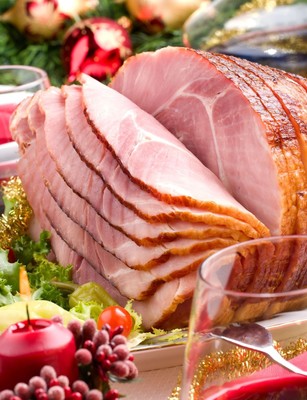A leg of ham is an important part of the Christmas feast tradition for many families, so here are some simple tips and advice when making your choice from third generation butcher Jon McMahon, of Eumundi Meats, Belmondos.
WHEN searching for the perfect ham, the choices at Eumundi Meats are endless. You can buy bone-in, boneless, easy-carve, double smoked, hormone free and hams from pigs that were raised in the flourishing hills of Bangalow.
Price is a guiding factor around the quality of the pork and growers who use the highest standard breeding and feeding programs as well as the process that has been used to create the ham.
Traditional wood smoking is a slower process, while liquid smoke, which is applied by aerosol or by dipping the meat in a bath, is used in creating more cost-effective alternatives.
A moist ham is also an attribute that people look for. The moisture should come more from the pork, not from the amount of water or brine that has been added or injected during the curing process. The amount of water in the ham determines its quality or grade so don’t be fooled into thinking a really moist ham is necessarily better.
So what makes a Eumundi Meats Christmas Ham distinctive? As with most things, quality takes time.
Jon explains the process in creating their mouth-watering hams.
“Our hams take, on average about three weeks to prepare. The pork legs are exclusively sourced from award winning Bangalow Sweet Pork,” he said.
“They are then cured for an extended period in our specially formulated cure that has been developed over five generations using real ingredients from our herb and spice collection.”
Jon said the pork legs then go into the smokehouse and are lightly smoked and then roast smoked with woodchips from beechwood and juniper branches which have a certain moisture content.
“This keeps the smoke aromatic yet prevents bitterness,” he said.
“They are then cooked with the steam on and off with roasting in between – a slow process which is double the length of time a normal ham is cooked maintaining the moisture and tenderness but keeping the texture firm.”
Jon said it is best to store ham in the coldest part of the fridge. Once opened, remove all packaging and store ham in a clean ham bag which should be rinsed every couple of days in a solution of vinegar and water. Your ham will keep for up to two weeks, if it lasts that long.







